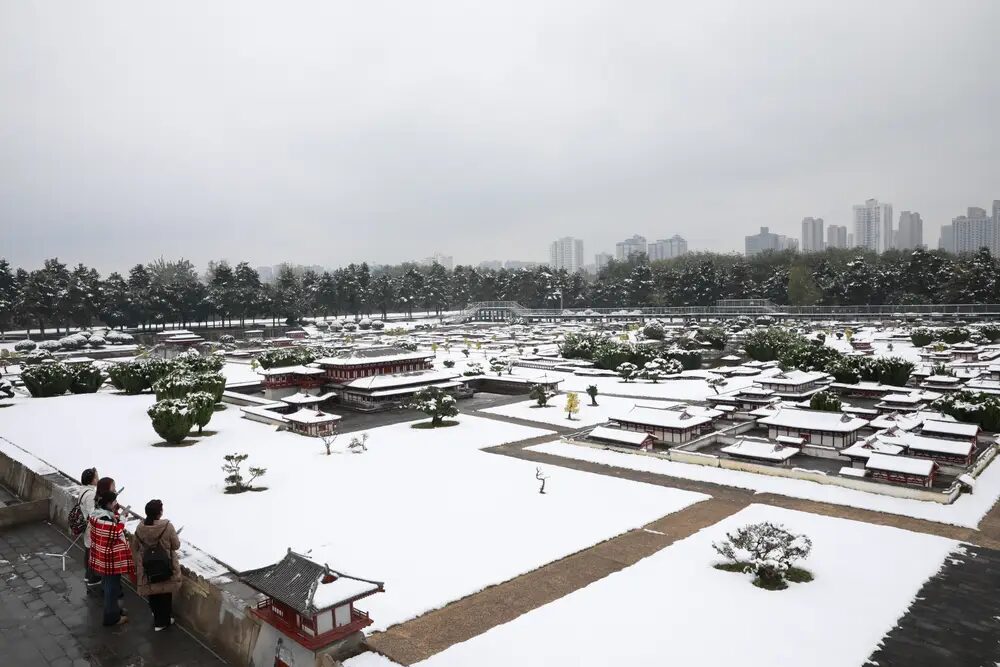OF THE
TIMES




Matthew Sosnowski, Olaf Popkiewicz· ·
An early medieval sword from Włocławek a witness to the formation of Polish statehood?
Friday, January 12, 2024, turned out to be a happy day for the employees of the company leading the work related to deepening the pool of the port of the Sport and Recreation Center in Włocławek. Completely accidentally they made an unprecedented discovery related to history, not only Włocławek, but all of Poland.
While unloading the charm from the harbor by boat, Sławomir Mularski - the owner of the company leading the work - noticed on the mule, thrown away by the excavator, an entirely preserved early medieval sword. Without a moment of hesitation, the Provincial Monument Protection Office in Włocławek informed about his discovery, whose employees secured this valuable monument and handed it over for the first analysis.
Preliminary analyses of the discovered sword now allow us to conclude that it is dated to the 10th century, that is, the period when the country of the first Piast was formed. Typologically, based on the construction of the frame, this sword can be classified as the S type, according to Petersen typology, which are characterized by a simple blade that extends symmetrically towards the end, while the head of these swords usually had a three-piece head overlay and are dated to the period between 900 and 1000 years. It is believed that the region of origin of this type of weapons should be considered northwestern Europe (areas of Scandinavian or Franconian State), the territory of today's Poland was most likely due to Scandinavian influences, which at that time were very strong throughout the region of Central-Eastern Europe.
In order to assess the condition of the discovered sword, an X-ray photo was also made, which allowed us to look under a layer of over a thousand years of corrosion and to discover further fascinating facts related to the very construction of this unique object. First of all, the inscription can be clearly seen on the main sword, perhaps the sword from Włocławek can be counted as one of the famous swords signed with the mysterious inscription U[V]LFBERTH, which is one of the most famous and at the same time the best, in terms of performance of the main, early medieval swords from Europe. This would be the eighth sword of this type discovered in today's Poland, however only after cleaning and maintenance can such a hypothesis about the origin of the main sword itself be confirmed.
The geographical-historical context in which this object was found is also interesting. On the basis of previous archaeological and historical research, we know that the history of Włocławk is very rich and reaches much further into the past than the fact that the city was locked in 1255. Probably in the 10th century, i.e. during the period when the discovered object is dated, a strong town center, connected to the beard on the Vistula, operated in this place, through which the trade route from the Kujaw area to the land of Dobrzyn, Chełmiń and further towards Prus. Perhaps because of the location over the Vistula river, which must have been an important sailing trail at that time, there was also a port, connecting this place to the waters, and as a result, the far-reaching paths of the Batycian Sea, also towards Scandinavia.
It should be mentioned that this is not the first object of Scandinavian origin discovered around Włocławek and dated to the beginning of Polish statehood. In 2007, during the construction of the A1 motorway, bypassing Włocławek from the west, in the town of Bodzia, a cemetery dating back to the Xth and XI centuries was discovered, where during the investigation they found many objects of Scandinavian origin, allowing us to assume that in this necropolis were buried by foreigners from Scandinavian, who perhaps they were in the service of the first Piasties, who were creating their country in this area during this period.
Looking for an analogy to the sword from Włocławek we can point out two swords of this type (type S according to Petersen) from Lutów (voj. Kuyavian-Pomeranian) and from Ciepłý (voj. Pomeranian). This second monument is particularly interesting because the sword from Warm was found in the context of the early medieval cemetery, located on the edge of the Vistula Valley, in the vicinity of today's Anger. The cemetery, like the one from Bodza, dates back to the 10th and 11th centuries, and houses graves of people whose origins are related to Scandinavian immigrants, as was the case with the Bodza necropolis. Perhaps the sword discovered in Włocławek was an element of equipping a person among the people responsible for the expansion of Piast's rule in the 10th century to new areas beyond Greater Poland? However, we leave the answer to this question in the sphere of hypothesis, which require wider research, which unfortunately do not always have to bring us the expected results.
Returning to the sword itself, it now faces a strenuous process of conservation and scientific development, which may bring us further revelations related to its construction and ornaments, and consequently its wonderful history.
(Google translation)

Comment:
From 2015: 872 days of cold, hunger and death: Leningrad siege survivors share their memories
From 2018: Anniversary of the Siege of Leningrad: Putin visits his older brother's grave
From Michael Jabara Carley: Remembering Russia's V-Day (or, the history of World War II not often heard in the West)